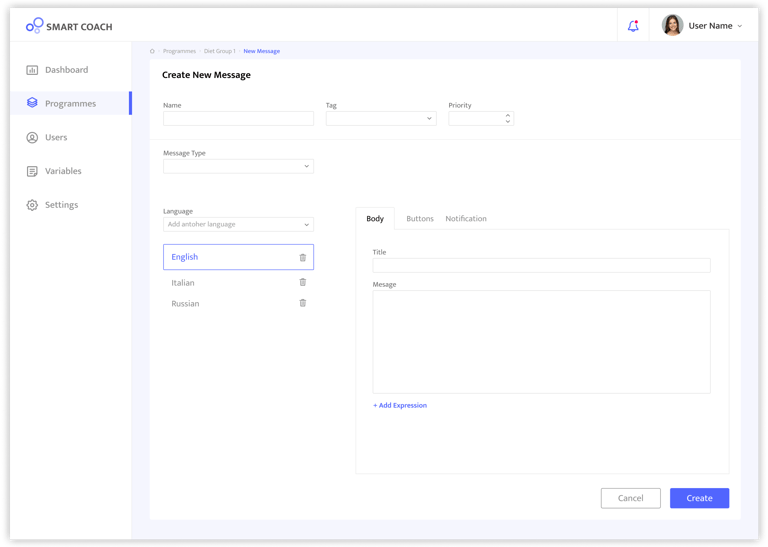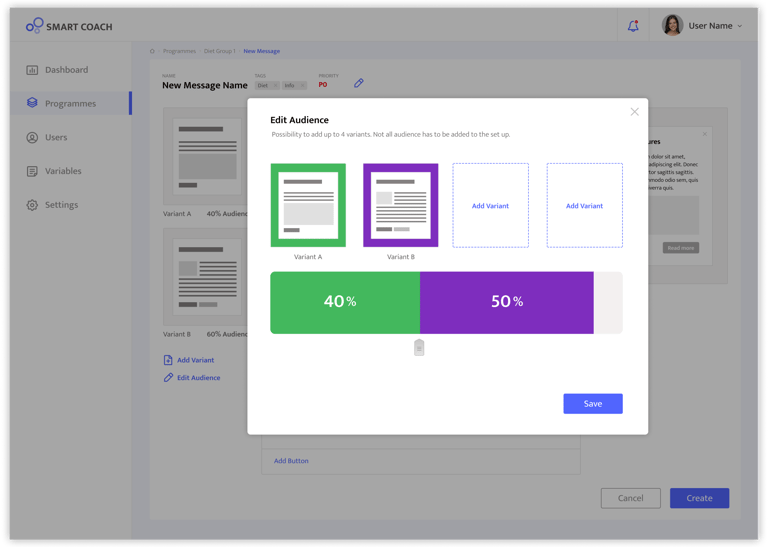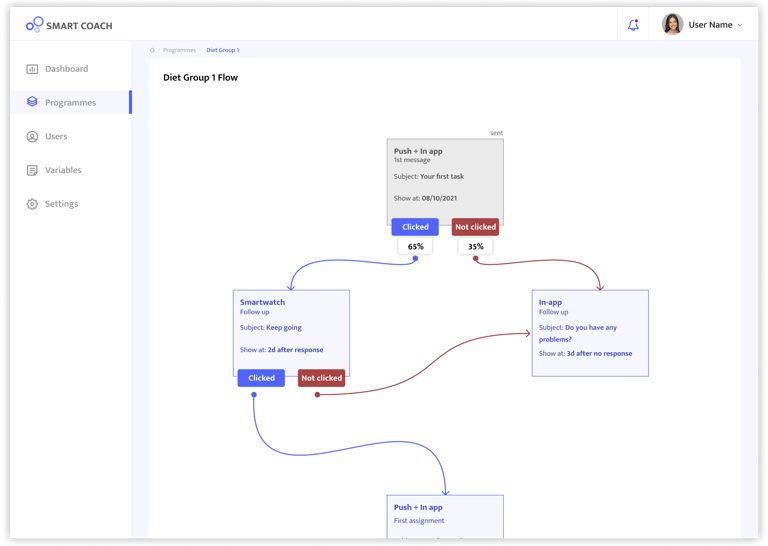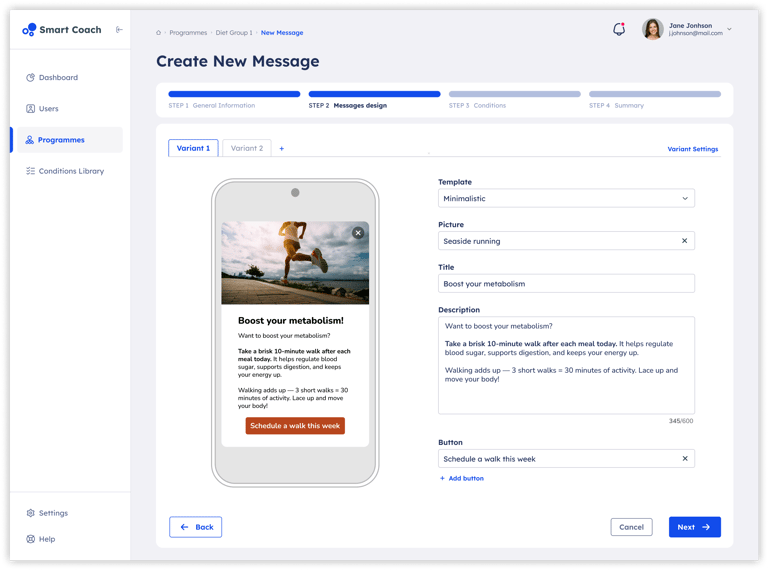Business Coaching Platform
PROJECT OVERVIEW
Project Title
Coaching Program Management Tool.
Objective
To deliver an intuitive yet powerful tool for creating and managing coaching programs, integrated with mobile phones and wearables for remote guidance and progress tracking.
Context
Platform was build only by engineers without a UX on board.
The goal focused on enhancing existing features, making them more user-friendly and accessible to a broader audience.
The audience: doctors, dieticians, fitness coaches etc.
My role
Leading Designer and PO responsible for the project.


Problem Statement
As the platform was done solely by engineers, it was quite complex in flows, visualisations and language used.
Redesign the tool to increase user-friendliness which should improve user satisfaction metrics.
My process
Expert audit
↓
Desk research *
↓
Benchmarking
↓
Interviews
↓
Preliminary designs
↓
Usability Testing
↓
Implementing changes
↓
Overseeing implementation, Design QA
Desk Research: I've reviewed forums, social groups, articles, and conducted informal interviews.
Benchmarking: I've analyzed competitor tools and potential market applications (e.g., doctors' offices, dieticians, fitness trainers).
Expert Audit: I've performed an initial audit to identify key issues.
Interviews: I've conducted with current users who were intended to be system operators.
Usability Testing: Engaged six testers to evaluate the platform. I've created scenarios and performed as a moderator, had help from antoher designer as an observer.
Coach
Needs
Simple, self-service program creation
Visual journey builder with clear progress tracking
Ready-made templates for motivational messages (push / in-app / wearable)
Quick duplication & easy edits for different clients
Problems
Old setup felt like coding; steep learning curve
Heavy forms/tables, no final program preview
Messages looked dull and failed to engage clients
Difficult to test or compare program variations
User-Centric Design:
Considering the diverse backgrounds, tech experiences, and ages of potential users, the solutions needed to be universally understandable. The design aimed to mimic familiar tools like text editors, chats, and email creators.
Simplified Message Creation:
Introduced predefined templates for easy content creation.
Added options for creating messages from scratch for advanced users.
Expanded message types to include push notifications, in-app messages, and smartwatch notifications.
Integrated titles, buttons, and images into a unified editor interface.
Program Visualization:
Adopted inspiration from marketing tools to visually represent the coaching program as a journey or path.
Messages can be copied and attached to different segments without repetitive setup.
Segmentation applies to the entire journey, with visual cues showing recipient engagement at each step.
Allowed adding variances and triggers (actions, inactions, or time-based) within the journey.
Language Simplification:
Analyzed and rewrote platform language for better clarity and comprehension, with translation support for non-English speakers.




Prototype Testing:
I've created prototypes and conducted usability tests, which showed significant improvements in understanding and program initiation flow.
Visual representation of the program was well-received by testers.
Message Creator Testing:
Demonstrated a simple message creator using templates versus an advanced editor to built messages from scratch.
Testers preferred templates for their ease, speed, and quality results.
The advanced editor was found overwhelming, leading to its removal in favor of adjustable templates.




